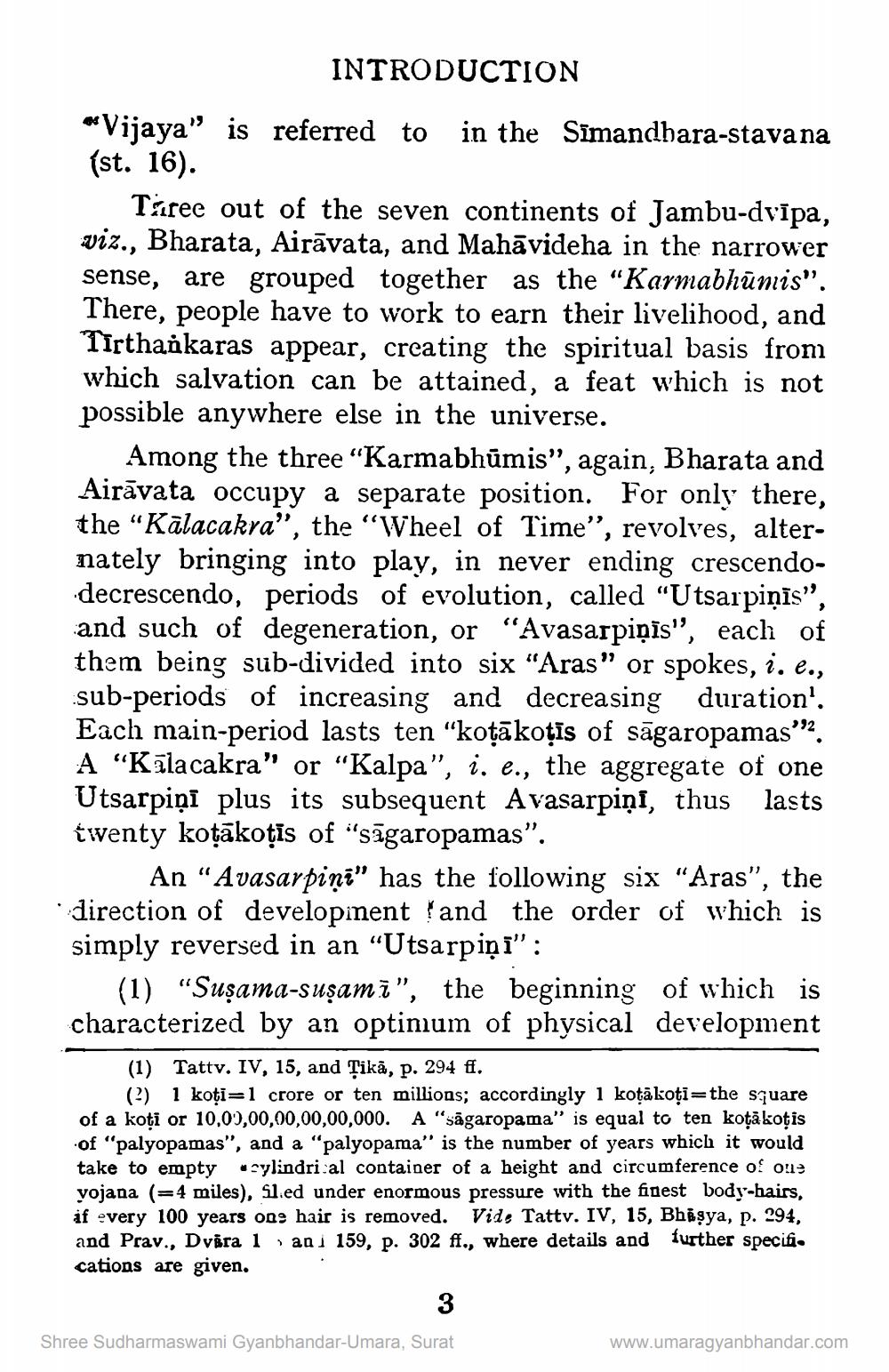________________
INTRODUCTION "Vijaya" is referred to in the Sīmandhara-stavana (st. 16).
Táree out of the seven continents of Jambu-dvīpa, viz., Bharata, Airāvata, and Mahāvideha in the narrower sense, are grouped together as the "Karmabhūnis”. There, people have to work to earn their livelihood, and Tirthařkaras appear, creating the spiritual basis from which salvation can be attained, a feat which is not possible anywhere else in the universe.
Among the three "Karmabhūmis”, again, Bharata and Airāvata occupy a separate position. For only there, the “Kālacakra”, the “Wheel of Time”, revolves, alternately bringing into play, in never ending crescendodecrescendo, periods of evolution, called "Utsarpiņīs”, and such of degeneration, or "Avasarpiņīs", each of them being sub-divided into six "Aras" or spokes, i.e., sub-periods of increasing and decreasing duration'. Each main-period lasts ten "kotākoțīs of sāgaropamas”. A “Kālacakra" or "Kalpa", i. e., the aggregate of one Utsarpiņi plus its subsequent Avasarpiņi, thus lasts twenty kotākoțīs of "sāgaropamas”.
An “Avasarpiņi" has the following six "Aras", the direction of developinent land the order of which is simply reversed in an “Utsarpiņi":
(1) "Suşama-suşamı", the beginning of which is characterized by an optimum of physical development
(1) Tattv. IV, 15, and ļikā, p. 294 ff.
(?) 1 koţi=1 crore or ten millions; accordingly 1 kotākotī=the square of a koti or 10,00,00,00,00,00,000. A "Sāgaropama" is equal to ten kotākotis of "palyopamas", and a "palyopama" is the number of years which it would take to empty cylindri al container of a height and circumference of our vojana (=4 miles), Sled under enormous pressure with the finest body-hairs, if every 100 years on, hair is removed. Vid, Tattv. IV, 15, Bhisya, p. 294, and Prav., Dvära 1 an 1 159, p. 302 ff., where details and further specifi. cations are given.
Shree Sudharmaswami Gyanbhandar-Umara, Surat
www.umaragyanbhandar.com




